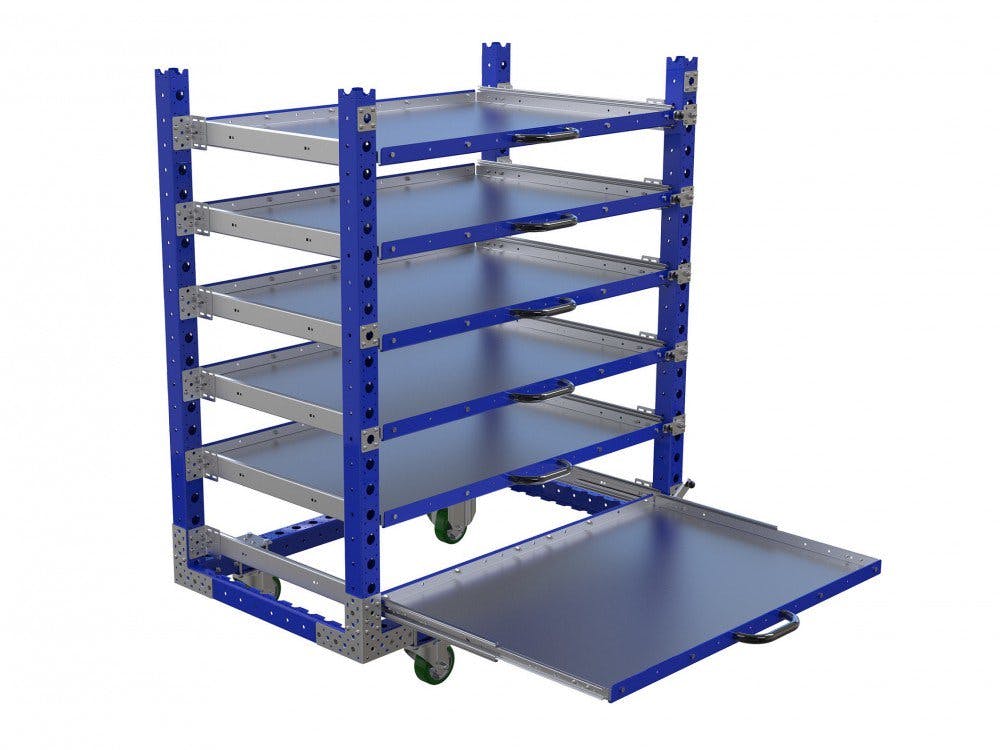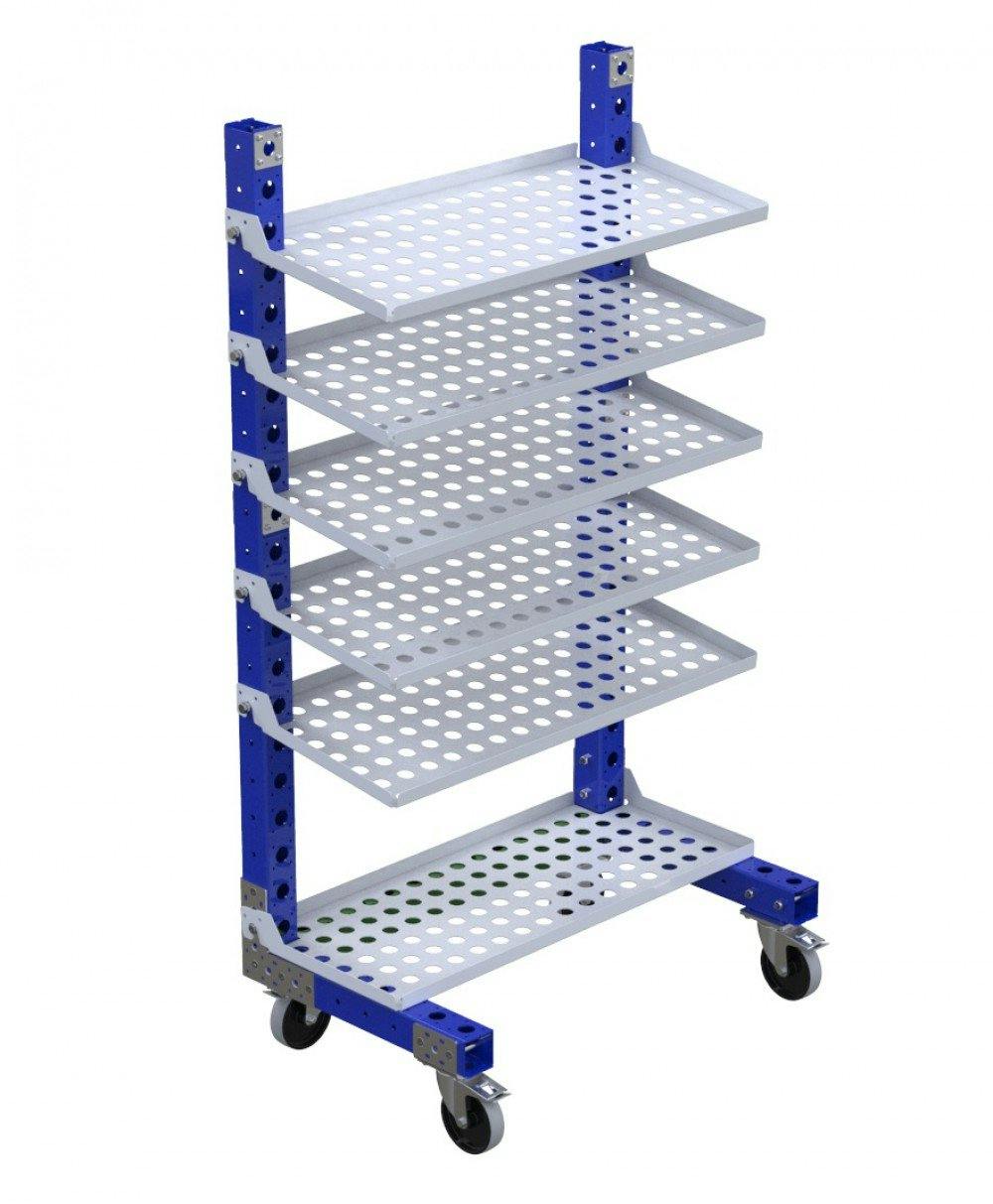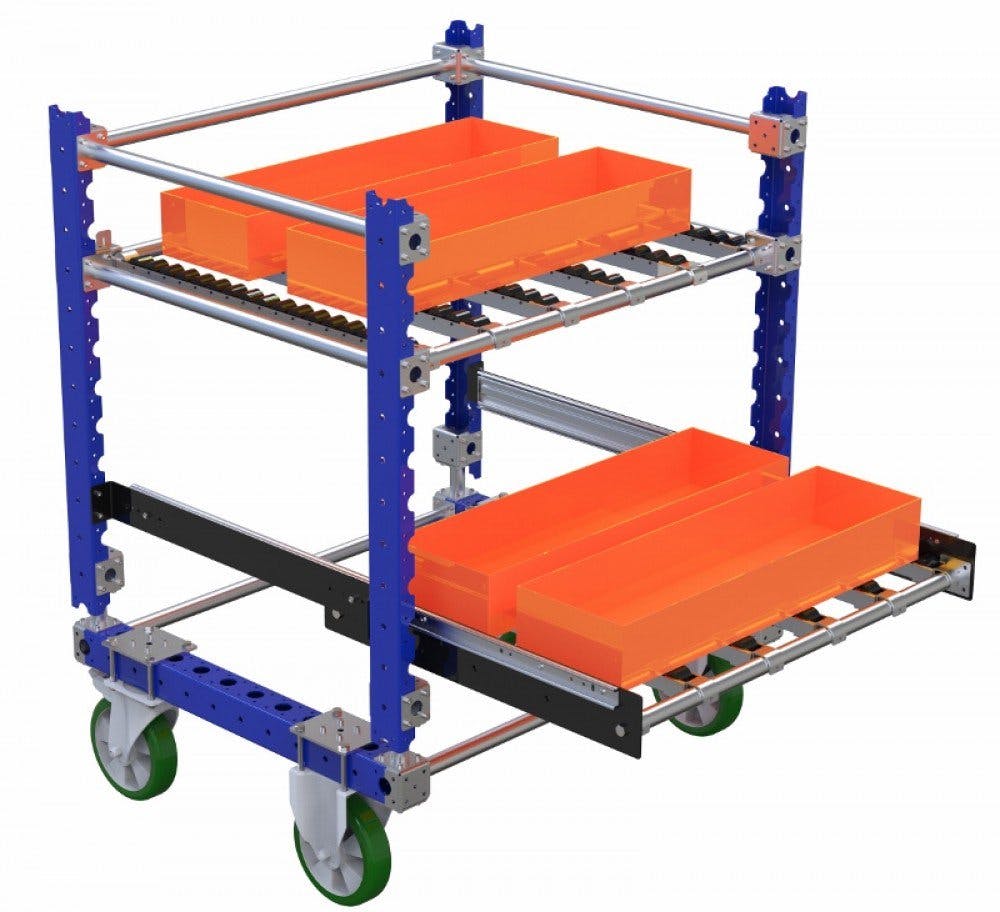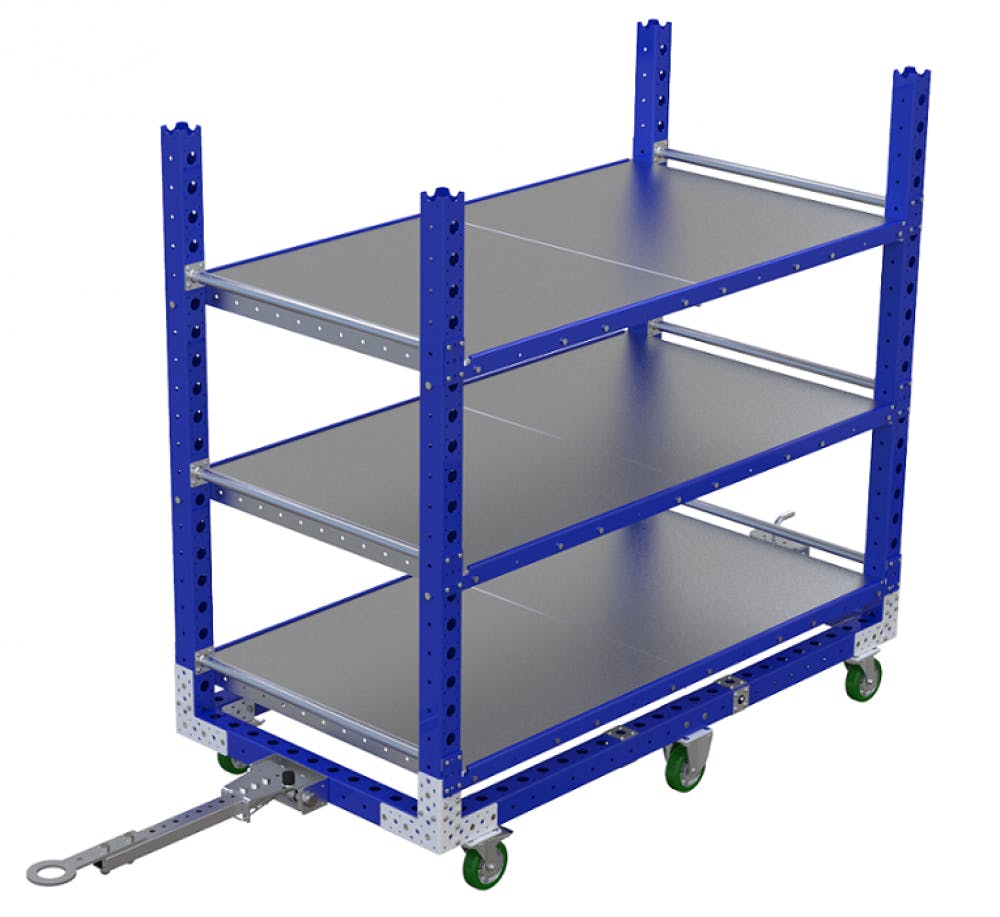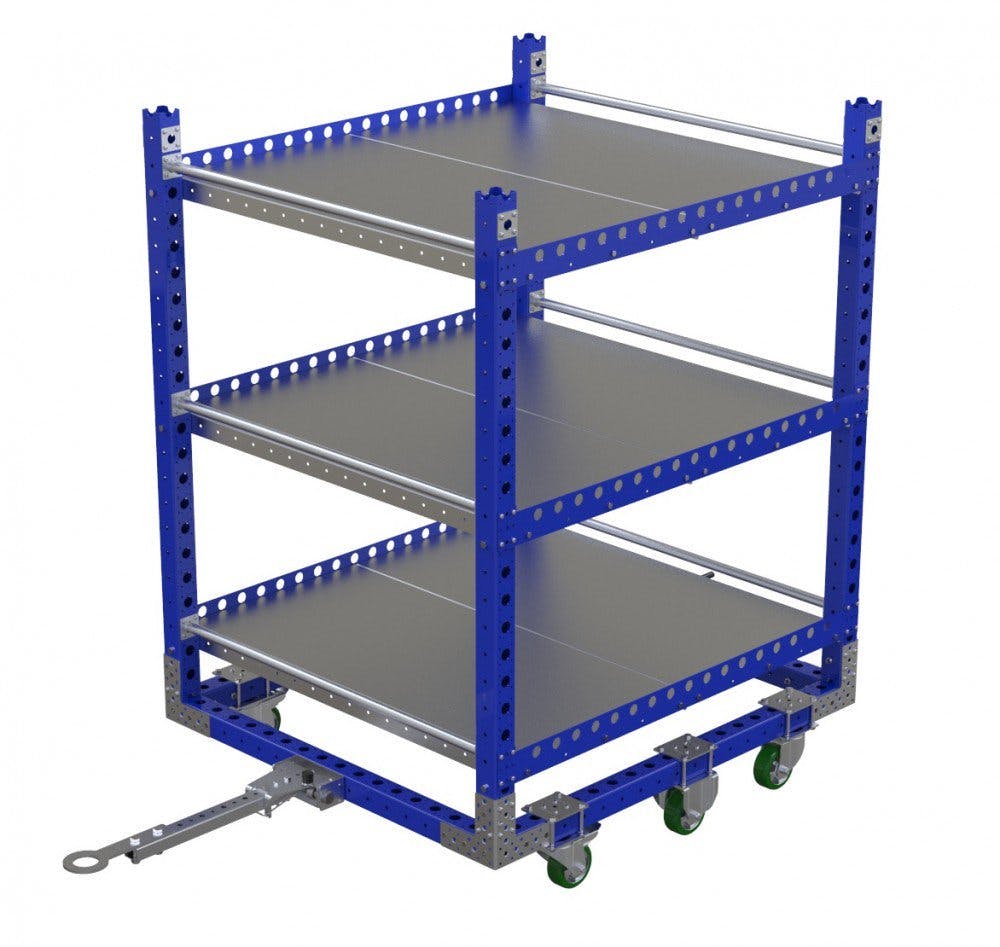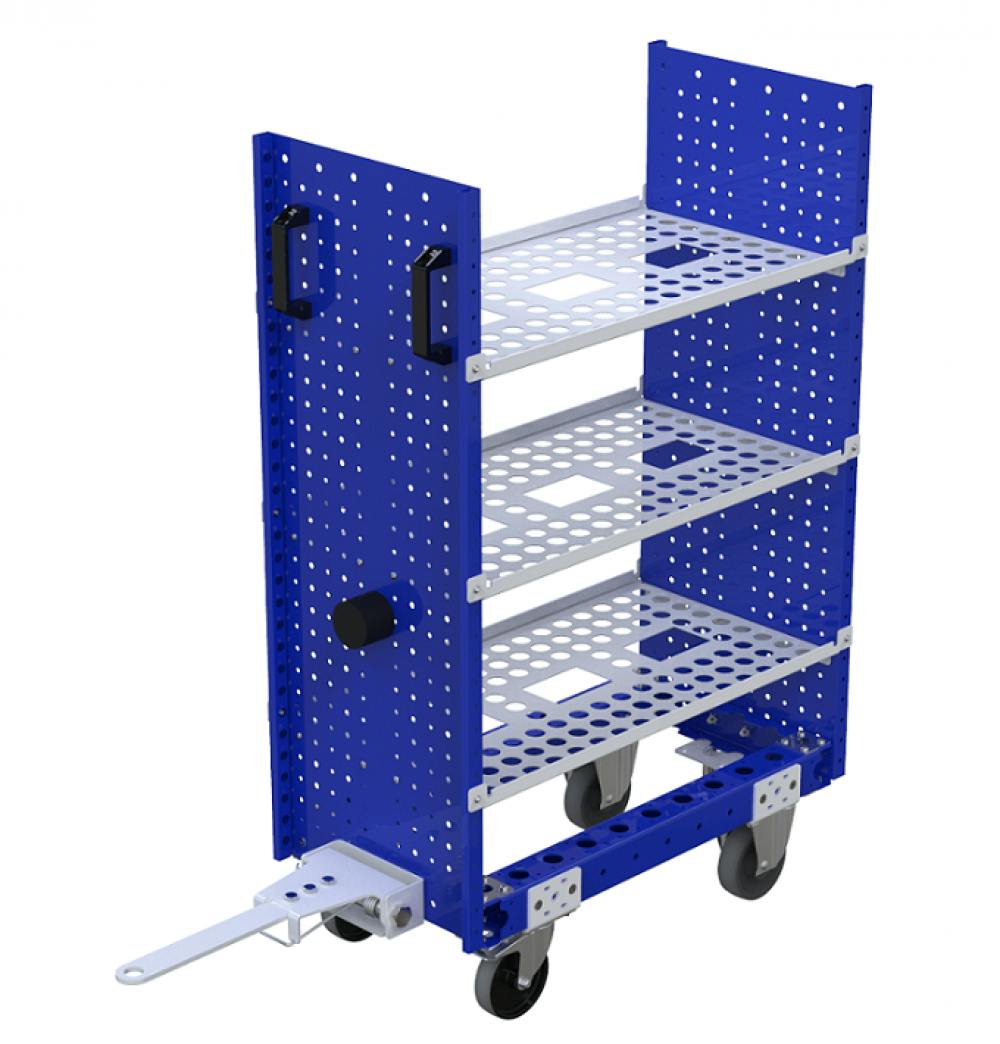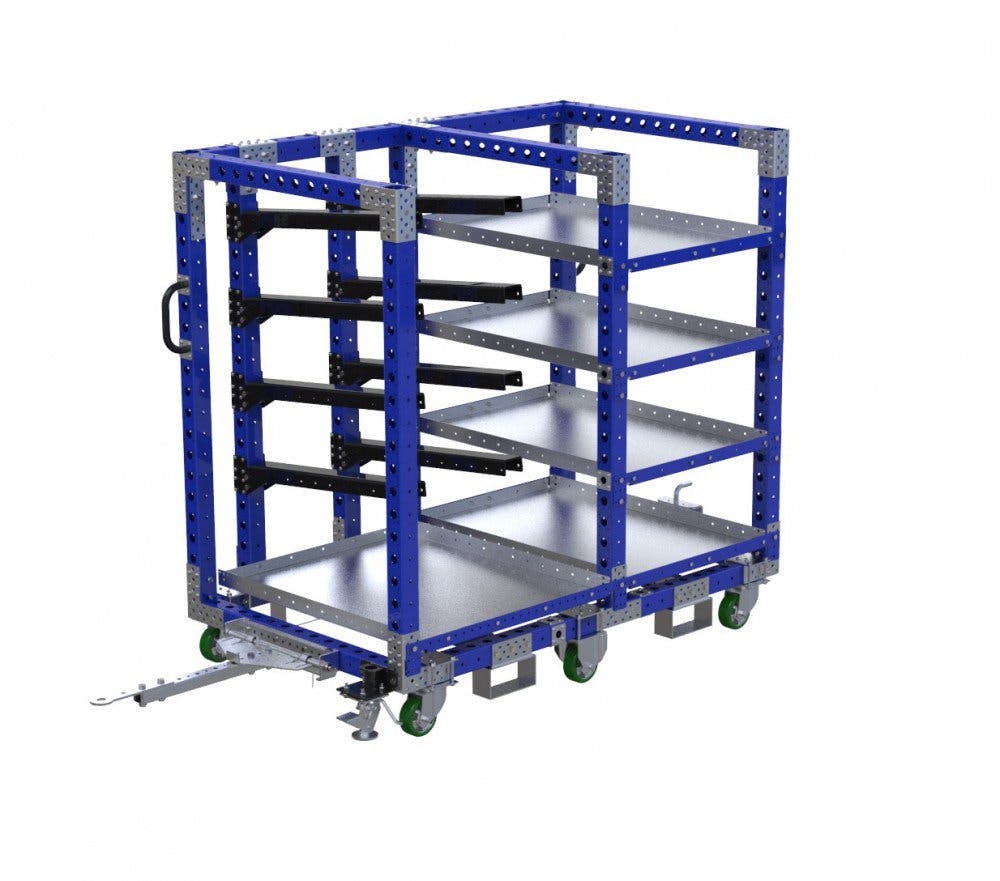FlexQube’s Top 7 Shelf Carts

Shelf carts have become a common application used within facilities and factories. They can be towed using a tugger within a tugger train system and also pushed manually by an operator. Generally, shelf carts are used to transport totes, bins, boxes or other materials.
Shelf carts have become a favourite amongst our customers in helping to reduce the need for forklift traffic. Reducing this forklift traffic is becoming more and more of an objective for facilities globally, and the use of shelf carts helps in this transition.
Our flexible concept allows you to manually alter and customize your shelf carts as you please, even after delivery. Because our solutions are bolted together and not welded, it means our customers can change the shelf height of our shelf carts, we can add or remove tow bars, and handle bars, and even remove total shelves if needed. The choice is totally up to you, and therefore our shelf carts are quickly becoming a popular solution, because of the ability for you to personalize the cart to suit you.
If you’re interested in reducing your forklift traffic with shelf carts, below we have outlined FlexQube’s top 7 shelf carts.
1. Shelf cart with extendable pull out drawers – Q-100-0197
This shelf cart is all about functionality. Each shelf is equipped with telescopic slides that can be extended 100% from the base. This has been used by our customers to great success when there are a lot of materials packed tightly onto each shelf, and it is important for the operator to remove these materials in an ergonomic manner. Each of these shelves are equipped with an automatic lock to ensure the shelf doesn’t come loose.
2. Removable flow shelf cart – Q-100-05947
This smaller cart is an ideal flow shelf cart solution with removable shelves. It is ideally designed for smaller totes or boxes, the shelves have been equipped with holes to make the cart lighter and easier to move by operators. The shelf height on these carts can be adjusted in 70mm intervals.
3. Kit-cart with extendable rollers track shelves
This kit-cart is equipped with two levels with rollers for large totes. The shelves are attached via telescopic slides which allows the roller tracks to be slid out 100% for easy access.
4. Flat shelf cart – 70 x 36 inch – Q-100-0985
This flat shelf cart is a standard shelf cart used to transport a variety of bins and totes within a facility. It comes with 3 shelves, the height of these shelves can be easily altered or shelves can be totally removed. This cart is equipped with a drop pin and hitch tow bar.
5. Flat shelf cart – 55 x 48 inch – Q-007-3079
Another flat shelf cart, this cart is a little bit squarer in it’s shape. Once again it is equipped with 3 shelves. This particular cart’s shelves have no actual border edges themselves, the FlexTubes on the sides actually hold the materials in place. The shelves can however be flipped 180 degrees to a create a 1.5 inch lip on each side to help with keeping the products and materials in place. The shelves on this cart can once again be manually changed in height or removed, according to your needs even after delivery.
6. Shelf Cart – 830 x 420 mm – Q-100-0792
This shelf cart is smaller and narrower than the above, ideal for moving through small lanes within facilities, or in work areas short on space. This shelf cart is equipped with a spring tow bar as well handles for operators to push with. The shelves and the side panels have holes to make the whole structure lighter while also being able to support heavier totes and bins.
7. Kit Cart – 70 x 41 inch – Q-100-0650
This cart has been specifically designed to transport large tubes, by hanging them on the left-hand side of the cart. However, on the right hand side this kit cart is equipped with shelves, so totes or boxes can be placed. This is ideal for material presentation during assembly work of hoses or large tubes.
If you’re looking for a similar solution, contact us at sales@flexqube.com
You may also like:
FlexQube’s top 5 industrial push carts
3 tips on how to improve ergonomics in material handling
How to start the transition from forklifts to a tugger train system
